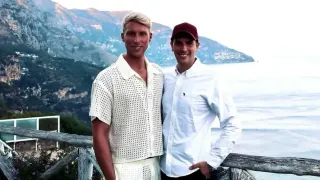
2 hours ago
Furry Convention in Slovenia Attacked: Organizers Vow to Prioritize Safety After 2025 Incident
READ TIME: 2 MIN.
GoldenHorn, Slovenia’s largest annual furry convention, became the scene of targeted attacks during its 2025 gathering, raising urgent concerns over event safety and the vulnerability of marginalized subcultures. The convention, organized by SloFurs, was held in mid-November and drew participants from across Europe, many of whom also identify as members of the LGBTQ+ community. The furry subculture, while not defined by sexuality or gender, has a significant overlap with LGBTQ+ identities, making the safety and acceptance of attendees a central concern for organizers and participants alike .
The attacks occurred over two consecutive nights. On November 14, firecrackers were thrown toward the party houses where attendees were staying. Organizers clarified that the individuals responsible were not guests of the convention or resort. The following night, another group was seen near the accommodations, prompting further notifications to resort staff and local police. Authorities confirmed the arrest of one individual in connection with the incidents. Later, some guests were physically attacked in their rooms and sprayed with a fire extinguisher. Immediate medical attention was provided, and all reported injuries were treated on site .
The attacks left many attendees shaken. One participant shared their experience on Bluesky, expressing feelings of fear and shock but also calling on the community to resist intimidation. “Don’t be scared about living your hobbies, passion, and selves. Don’t let these people win; they want you to be scared, and they want you to hide and disappear,” the attendee wrote, urging support for both the event and the community’s resilience .
The response from organizers was swift and transparent. In a public statement, SloFurs and the GoldenHorn team apologized and promised that attendee safety would become the highest priority moving forward. They confirmed that a new venue has been secured for 2026 and that enhanced security protocols will be implemented to prevent similar incidents .
The furry community is known for its celebration of anthropomorphic animal characters and its culture of creativity, acceptance, and inclusiveness. Although being a furry is not inherently tied to any particular sexual orientation or gender identity, many events like GoldenHorn attract a diverse range of attendees, including LGBTQ+ people who may find safe spaces and affirmation within these subcultures .
The attacks at GoldenHorn have reignited discussions about the intersection of subcultural and LGBTQ+ safety in public spaces. While hate-motivated crimes against LGBTQ+ events and gatherings have been documented in various parts of Europe, incidents targeting the furry community with such intensity remain rare, but are a reminder of ongoing challenges faced by marginalized groups .
In the wake of the attacks, GoldenHorn’s organizers have reiterated their commitment to creating a safe, affirming environment for all attendees, regardless of identity or background. “For 2026, attendee safety will remain our highest priority,” the organizing team stated. The new venue and its enhanced security measures are intended not only to address immediate safety needs but also to send a message of resilience and solidarity to the broader furry and LGBTQ+ communities .
Attendees and allies are encouraged to remain vigilant, support each other, and continue building inclusive spaces where everyone is free to express themselves without fear.






